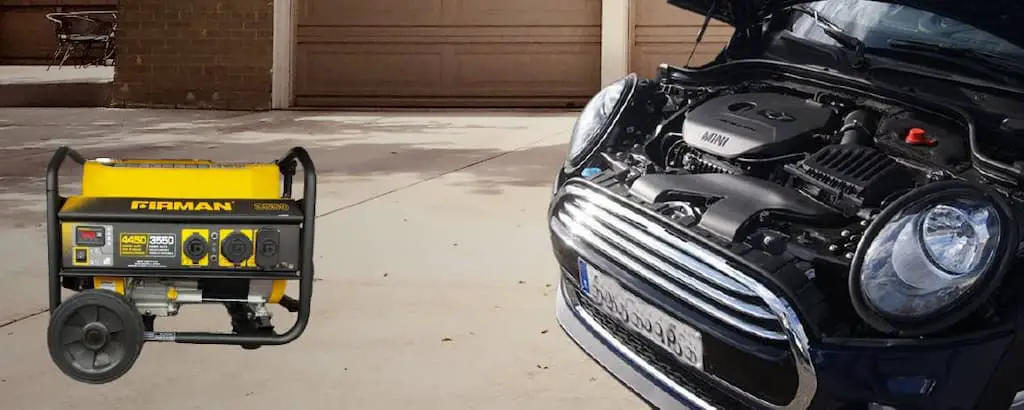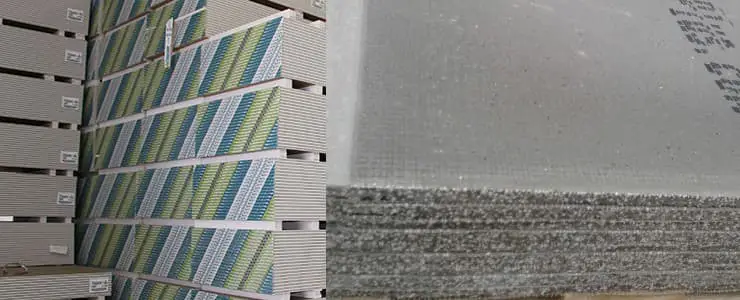Can You Really Jump Start a Car With a Generator?

It’s incredibly frustrating to try and start your car to find that the battery has died for one reason or another. The idea to hook a car battery up to a generator to charge it is a good one in theory, but how does it hold up in reality?
You can jump start a car with a generator that utilizes electric-start buttons by hooking up the car battery to the generator’s external battery with jumper cables. Alternatively, a battery charger will charge a battery but not jump-start one. However, battery chargers are still handy as backups.
In this article, I’ll be discussing whether you can jump-start a car with a generator, as well as other information pertaining to generators and car batteries.
Can a Generator Safely Jump Start a Car?
An electric start generator can safely jump start a car by giving its battery an immediate burst of energy, and just enough energy to allow the vehicle’s alternator to continue charging.
The main problem is that to charge, car batteries need DC or direct current. This differs from AC, or alternating current, which is what generators generally output. This means you need one of two things to make a generator work when jumping a car.
Electric Start
A generator with electric start is capable of jump-starting a car battery, and all that’s required is to connect the generator’s external battery with the car battery via jumper cables. Keep in mind that this isn’t the intended use of electric start on a generator, but it will suffice in a pinch if you have no other options.
Electric start works because it provides a burst of power to the battery, and if that burst is enough to get the car to turn over and start, you can use the car’s alternator to further charge the battery. Alternators in most cars are smaller cousins to generators and will fully charge a car battery if you can get past the initial point of the vehicle starting.
Battery Chargers
A better option is to use a battery charger designed to charge car batteries. This will help ensure that your battery gets the proper amount of electricity from the generator. Unfortunately, this is a more indirect way of solving the problem – a battery charger won’t directly jump-start a car whose battery has died and so aren’t quick solutions.
Battery chargers are handy when used with generators because they allow you to reach areas that may not have electricity outlets handy. If you want to play safe in case your battery need to be charge, check out the best battery charger on Amazon.com now.
Battery chargers typically have regular 110 amp plugs that are readily compatible with the plugs found on most gas-powered generators. The amount of power supplied varies widely based on the model of charger you buy, but four amps are common. Depending on how dead the battery is, you can expect to wait anywhere from two to 24 hours.
Some battery chargers have multiple charging modes for various levels of battery depletion. For example, three-stage charging is highly recommended to help restore the longevity of very depleted batteries that may have been sitting for a long time.
What Kind of Generator Will Jump Start a Car?
While solar generators are becoming more popular for their ability to provide power without tapping into non-renewable fossil fuels, they aren’t as reliable or useful for charging the battery or directly jumping a car battery. Realistically, a solar generator would only be suitable for use as a trickle charger to charge a battery over hours or days.
A solar powered generator and a gas-powered generator will jump start a car. However, a gas-powered generator will be able to complete the job much quicker and more effectively than a solar powered generator.
A gas-powered generator is usually a much safer bet, depending on whether it has electric start capabilities or DC outlets. Gas-powered generators usually come equipped with standard 110 amp AC outlets, but DC outlets are available on some models.
What You Can Use To Charge a Dead Car Battery
Everyone hates when they find out their car battery died from leaving lights on, or when a battery won’t work after being stored for some time. In a pinch, a generator might work, but it isn’t a reliable way to jump-start a car. Ideally, you want to use another car or a jumper pack designed for the task. As a backup option, battery chargers work great, too, albeit slowly.
Jumper Packs
A jumper pack is the ultimate device to have on hand for when a car battery dies. These handy little boxes can be charged at home to bring on the go for when your battery dies or you need to give someone else a jump. Did the battery die in the car and on your phone? Many jump packs these days come with USB ports to charge mobile devices in those challenging situations.
Cars take upwards of 200 amps of power to start, which most sources of electricity can’t provide in an easy, portable way. That’s where jump packs come in – they contain enough juice to plug into your battery and get your car going again. Once started, assuming your alternator is in good condition, your battery will charge up on its own.
Jumper packs are handy tools to keep in your trunk, and their importance in an emergency car kit can’t be overstated. There are simply no other tools of comparable size that can fully start a car with a dead battery.
Battery Chargers
Without included DC outlets, generators can’t output power compatible with car batteries, which take DC voltage. Thankfully, battery chargers help ease the burden and make charging a dead battery easier. With the use of battery chargers and generators, you could charge dead batteries miles from civilization. Of course, not everyone has a generator handy due to their size and cost!
If a battery charger is capable of outputting, say, 240v, if you combine that with a generator capable of the same output, that would be a great way to charge batteries. The amperage would vary, but four or more amps would suffice at a minimum level.
Battery chargers can be used without generators if you have a power supply handy. Assuming you’re using average house electricity, this will be significantly slower than when using a generator, but it will work over time. For this reason, battery chargers are often called ‘trickle chargers’ because they ‘trickle’ power to the battery.
Here’s Why Your Car Battery Is Always Dead
Almost everyone’s had their car battery die because they left a light on at some point. But when your car battery is regularly dead for no discernable reason, there might be something else going on that’s harming your battery or car’s electrical system.
A few reasons your car battery may not stay charged include:
- Loose or corroded battery terminal connections can stop the alternator from charging the battery as you drive.
- If lights are on a timer, the timer may be malfunctioning.
- Batteries in poor condition go dead from routine functions more easily, like radio and air conditioning.
- Batteries in bad condition can go dead due to extreme weather, which wouldn’t affect a healthy working battery.
- If the alternator isn’t functioning correctly, it may not charge the battery properly.
A Word About Car Batteries and Electrolytes
This is a problem as old as car owners – the battery isn’t performing properly, and the owner is pulling their hair out trying to find out why. Properly sealed batteries contain a solution of electrolytes that keep the batteries functioning at peak performance.
If your battery isn’t sealed, open it up and check the cells. There should be no corrosion on or around them, and each cell should be filled with an electrolyte solution past the top of its lead plates. If the solution has fallen below the top of the plate in any cell, it’s important to top it up with distilled water – tap water might work fine, but distilled is best to avoid upsetting the delicate electrolyte balance in the battery cells.
Final Thoughts
Car batteries dying is one of life’s great nuisances, but it isn’t an impossible challenge. With the help of modern technology and some innovative applications, it’s possible to charge dead car batteries with generators, with and without battery chargers or jump packs.




